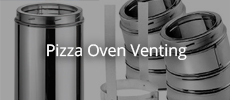Announcement
Collapse
No announcement yet.
36" Corner Build in Minnesota
Collapse
X
-
Yes! A monumental day with the completion of the dome. A lot more work to do with the outer arch, chimney and enclosure but I’m going to celebrate an important milestone.3 Photos
Leave a comment:
-
Looking good. You are getting very close to done. Do you think you will finish today?
- Likes 1
Leave a comment:
-
One more course down. I ended up build an elevated platform that worked well. One more course and the plug.2 Photos
Leave a comment:
-
Course 8 is complete. Gravity, thou is a heartless b****.
Is that the light at the end of the tunnel or is that a train…haha2 Photos
Leave a comment:
-
I finished up another coarse yesterday. I’m battling gravity more and more with a few issues before I was able to get the support in place.
Hopefully will get another course done to3 Photos
Leave a comment:
-
MnDude45 ,I do wish it was a good time to start. Unfortunately I would need to build a patio at the same time and just don't want to spend that much money at the moment. The commercial/ industrial electric business is very slow currently. I have only worked like 3 months in the last 2.5yrs. So until i can get back in somewhere and work for a stretch of time I will have to put my wants on hold.
Your build is coming together nicely. I can't wait to see it complete.
- Likes 1
Leave a comment:
-
Looking good. Seeing that makes me miss mine. I have been having thoughts of building a new one again lately.
- Likes 1
Leave a comment:
-
Alright, I got back at it last weekend between raindrops. I was able to finish the course meeting the inner arch without major issue. I will try to complete another course today and tomorrow.2 Photos
- Likes 1
Leave a comment:
-
Outstanding! We used to do that when I was a kid, that and pond hockey.Originally posted by MnDude45 View PostRandyJ - I closed it down for this fall. Wrapped it up tight with moving blanket, 6mil plastic and a tarp. I had to switch today to my winter project. I promised my grandkids a skating rink this winter so I’m spending this beautiful Saturday putting up the boards.
Leave a comment:
-
Sounds good. We will look forward to seeing more progress in the spring.
Leave a comment:
-
Must be a MN thing. My stepson lives in White Bear and he floods his backyard with water for the same thing. He played hockey his whole life and it is still in his blood....lol
- Likes 1
Leave a comment:






Leave a comment: